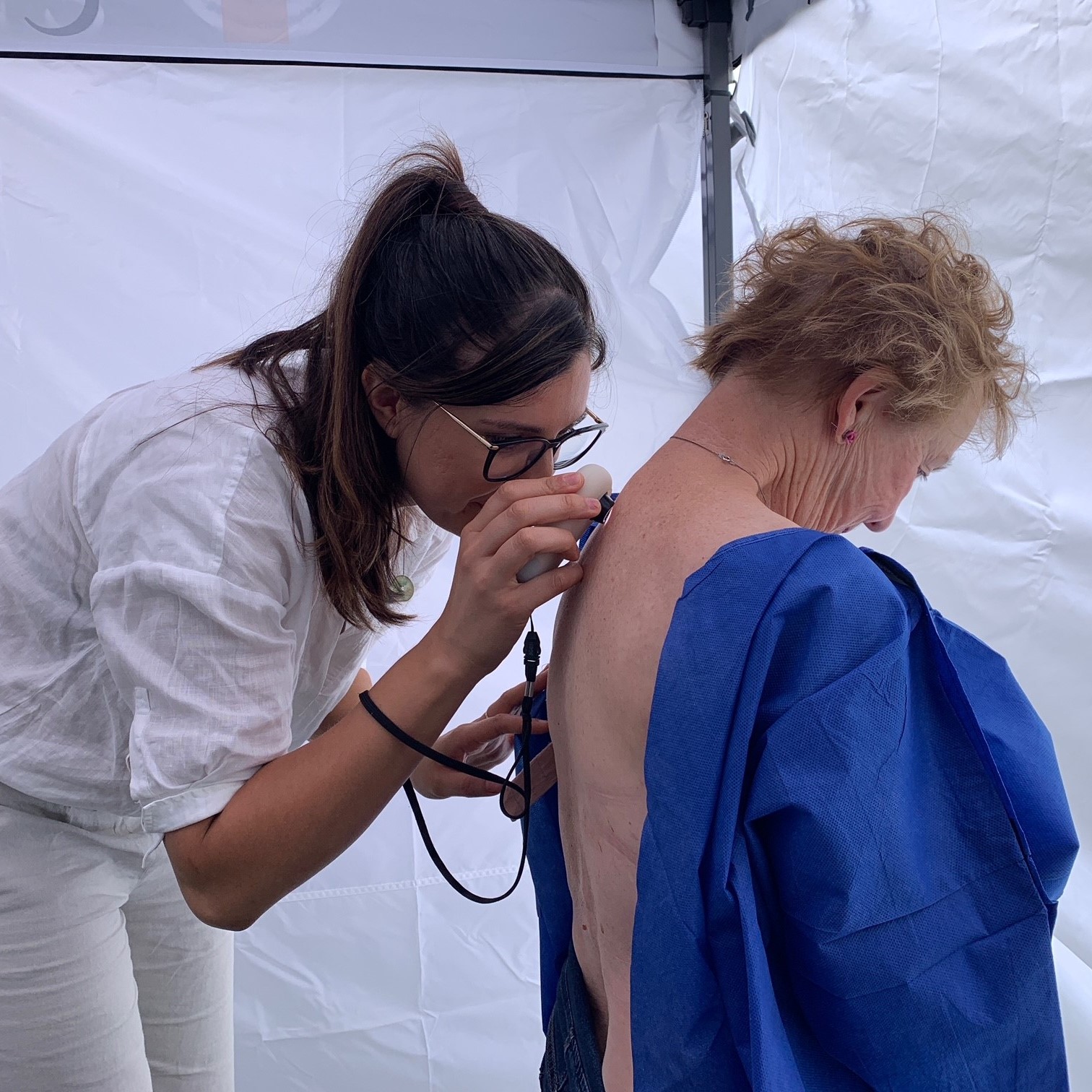
Australia needs to be innovative when it comes to skin cancer detection by embracing a nurse-led model that could save thousands of lives in the long run, according to a new paper.
With the unenviable record of the highest melanoma rates in the world - two in three people are diagnosed with skin cancer by the age of 70 - a new approach is needed to reverse this trend, say University of South Australia (UniSA) researchers in the nursing journal Collegian.
Launched in February 2023, the model utilises primary care nurses trained in dermoscopy and artificial intelligence (AI) software to detect suspicious skin lesions. This has been rolled out across 13 South Australian regional and rural mobile clinics with great impact.
More than 1200 people have been screened and hundreds of suspicious lesions identified, including 96 suspected melanoma cases.
The initiative has demonstrated that primary care nurses can detect suspected skin cancer early and consumers overwhelmingly accept this model of care, according to lead author Dr Kim Gibson, from UniSA's Rosemary Bryant AO Research Centre (RBRC).
"The current reliance on opportunistic, GP-led skin checks leaves significant healthcare gaps for Australians, particularly those living in rural and regional areas who face major barriers in accessing skin cancer screening," Dr Gibson says.
Each year, more than 2200 Australians lose their lives to skin cancer, with 1400 of these deaths caused by melanoma. The national economic burden is expected to reach $8.7 billion by 2030 if urgent reforms are not introduced.
"In country areas there are serious GP shortages, long waiting times, out-of-pocket costs, and limited access to dermatologists.
"Nurses represent the largest health workforce in regional areas and are ideally placed to bridge this gap. By empowering and equipping them to lead skin cancer detection, we can save lives."
Since February 2023, the Rosemary Bryant AO Research Centre has trained 51 nurses in dermoscopy (the use of a specialised tool) and AI to identify suspicious lesions and refer for follow-up care. The aim is to educate 600 primary care nurses nationally.
Co-author and RBRC Director, Professor Marion Eckert, says that with additional training, nurse practitioners will also be able to perform biopsies and excisions, further reducing pressure on overstretched medical services.
"This approach is all about reducing inequities. Rural Australians are not only more likely to develop melanoma due to predominately being outdoor workers but are also more likely to die from it. This model tackles that inequity by bringing services to communities and using nurses' expertise to detect skin cancer earlier," Prof Eckert says.
The timing of the proposal is significant, given that Australia is currently developing a National Targeted Skin Cancer Screening Program that will focus on high-risk groups, such as those in rural and regional areas.
The UniSA team advocates for nurses to play a central role in this national strategy.
"By embedding nurses into the frontline of melanoma detection, the national program can be more efficient, accessible and cost-effective," Prof Eckert says.
"Nurse-led models are already improving other areas of healthcare such as breast cancer screening, and skin cancer is a natural next step."
The research was supported by The Hospital Research Foundation, Preventative Health SA, Skin Check Champions, and Country SA Primary Health Network, with training support from Skin Smart Australia.
'A nurse-led model of care in response to Australia's skin cancer crisis: A discussion paper' is published in Collegian, the official journal of the Australian College of Nursing. DOI: 10.1016/j.colegn.2025.07.002






